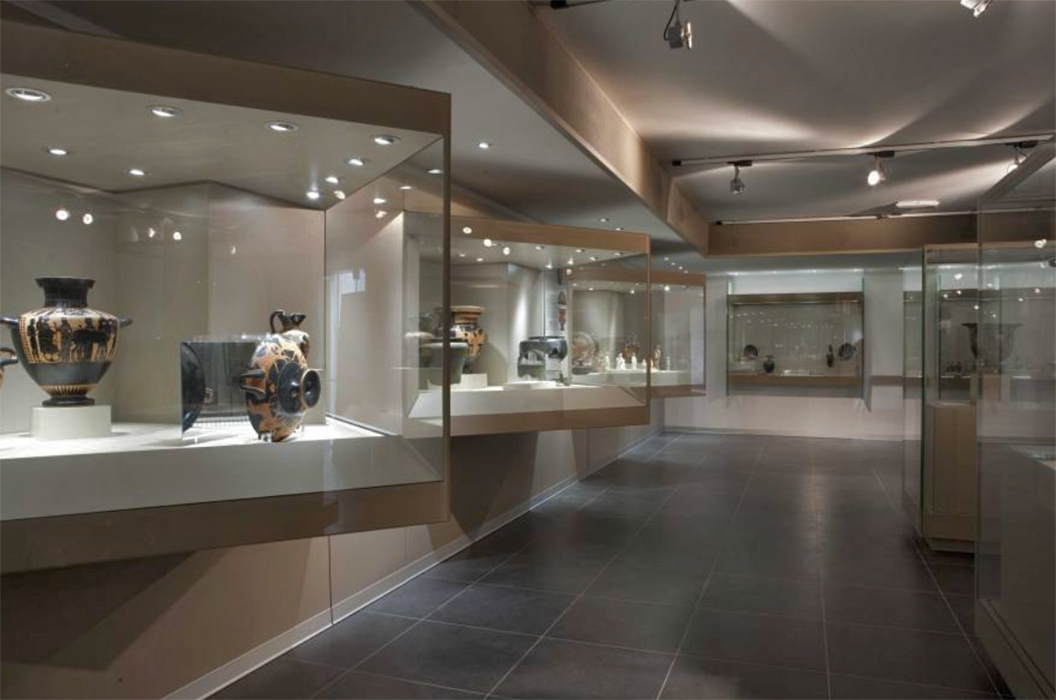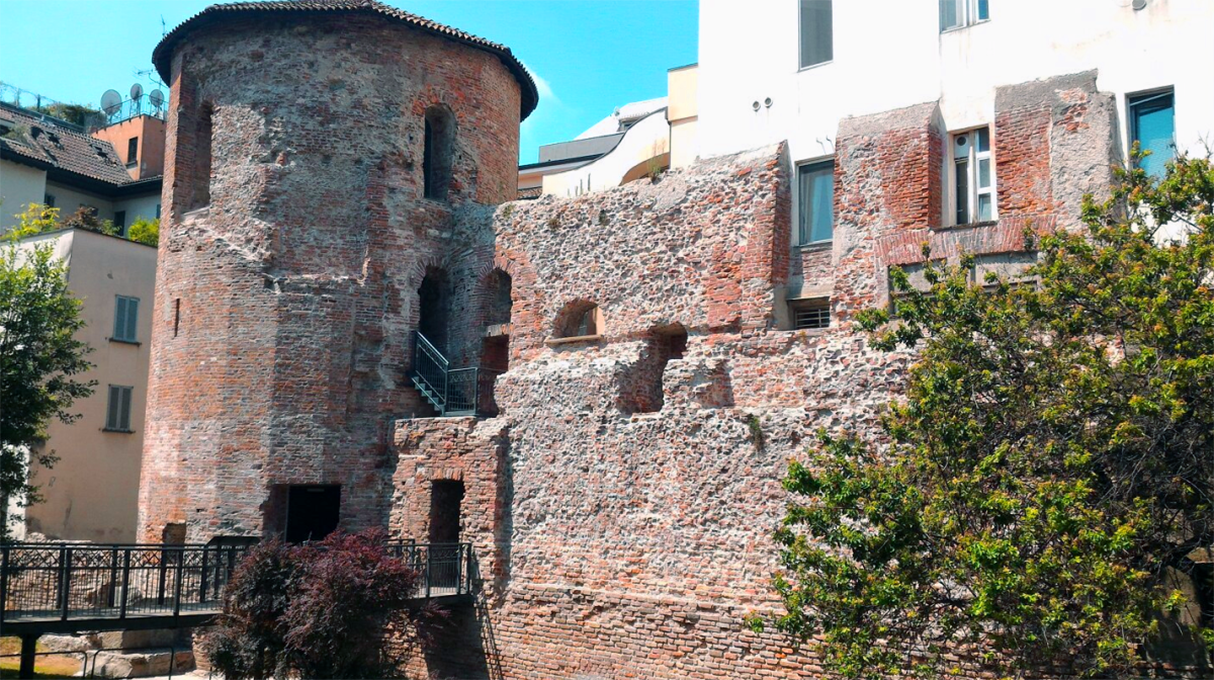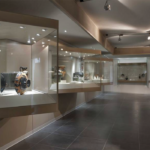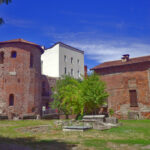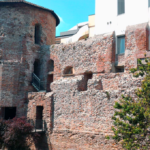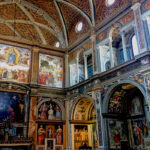Milan – The Archaeological Museum and The Monastero Maggiore
The origins of the Civic Archaeological Collections of Milan date back to the 19th century, when the Brera Academy recognized the importance of an archaeological museum connected to the artistic studies carried out by the academy. The initial nucleus was the Archaeological and Artistic Collection, consisting of over 500 pieces, purchased in 1814 from the heirs of the painter Giuseppe Bossi, secretary of the Academy, who had collected numerous archaeological artifacts from excavations carried out in public streets, churches, private homes in Milan that would have otherwise been dispersed. The Collection also included Greek, Etruscan, Egyptian, medieval, and Renaissance artifacts.
It was only in 1862 that the Regio Museo Patrio di Archeologia was finally established, run by an Archaeological Consultancy that oversaw its reorganization and expansion thanks to an annual allocation of government funds. Thus, the Archaeological, Artistic, and Historical Sections were born, where artifacts were gradually collected through purchases, gifts, or deposits by the Government, the Brera Academy, the Royal House, the Municipality, and private individuals. However, the division of materials between the Archaeological and Artistic Sections took into account more their artistic and aesthetic aspect rather than their historical and archaeological context, which made the destination and organization of particularly significant archaeological materials for the ancient history of Milan uncertain, which, even though found in historical-archaeological contexts, ended up in the Art Collections, where they are still displayed in the rooms of the Castle.
The museum was located until 1898 in the suppressed church of S. Maria a Brera, of the Order of the Humiliati. In 1900, the museum, which brought together state and municipal collections, was transferred to the Sforza Castle in the Ducal Court, and then moved in 1965 to the area of the ancient Monastero Maggiore di S. Maurizio, after the completion of the restoration of the complex, heavily bombed in the last war, while the Prehistory and Egyptian Sections remain at the Castle.
Over the years, the collections have gradually grown through donations, bequests, deposits by the State and the Lombardy Region, and purchases.
The museum is located in an extraordinary architectural context, the former Benedictine convent of the Monastero Maggiore annexed to the church of San Maurizio, founded in the 8th-9th centuries AD in an area that preserves imposing Roman-era structures.
The Monastero Maggiore It was the largest and oldest female monastery in Milan, entrusted from its origins to the Benedictine congregation. Its foundation (variously attributed to various important historical figures, such as St. Martin of Tours, St. Sigismondo, king of Burgundy, the Lombard queen Teodolinda, or even King Desiderio or Emperor Otto I) probably dates back to the late Lombard age and the first Carolingian phase (8th-9th century). In the course of the 9th century, the bishop Ansperto enlarged the city’s defensive walls, including the monastery within the city perimeter.
The monastery was initially dedicated to St. Mary (Sanctae Dei genitricis Mariae), while the dedication to St. Maurice appears from the 11th century onwards, becoming the main one in the following centuries. According to tradition, it was Emperor Otto I who donated the blood of St. Maurice as a reliquary to this institution, where a sister lived as a nun.
The monastery, called “Maggiore” from its origins, hosted nuns from the most illustrious Milanese families. Various documents and historical events testify to its importance, such as when in 1162, during the Barbarossa incursion, the city requested that some religious structures be spared: among these, in addition to the monastery and the church of Sant’Ambrogio, is also the Monastery Maggiore.
Little is known about the life and activities carried out within the monastery. Between the 14th century and the first half of the 15th century, there was a moment of crisis, with a contraction in the number of nuns, and they were also accused of living without observing monastic rule. In 1447, Pope Eugene IV introduced enclosure, and the monastery passed under the guidance of the reformed Augustinians. At the beginning of the 16th century, the monastic church was also reconstructed in new forms, decorated with frescoes largely realized by Bernardino Luini and his workshop.
In 1798, by decree of the Cisalpine Republic, the monastery was suppressed, and the buildings and lands allocated for other uses. The vast monastic complex was then partially demolished between 1864 and 1872 for the opening of Luini and Ansperto streets. After the bombings of 1943, only the church of San Maurizio and the entrance cloister, now part of the Archaeological Museum, remained of the oldest structures.
The monastery arose within an area of great historical importance, due to the presence of ancient remains, dating back to the Roman period, which were incorporated into the monastic structure, allowing their preservation to the present day. A square tower, part of the Roman circus, was reused as the bell tower of the church, while a second tower, of polygonal form, connected to the walls of the Roman city, was reused as a chapel. Nearby were also the remains of the ancient imperial palace.
During the construction of the Archaeological Museum between 1959 and 1961, the excavations carried out under the supervision of the Archaeological Superintendence of Lombardy, revealed the remains of a Roman domus. The archaeological remains are now visible inside the Archaeological Museum.
The church of San Maurizio al Monastero Maggiore is considered the Sistine Chapel of Milan, due to its architectural structure and the high quality of the Leonardesque school’s decorative cycle.
The church belongs to the type of “double churches”: it is characterized by a smaller nave for the faithful and a nave dedicated to the enclosed nuns. The two single-naved halls are separated by a partition.
The history of the church is closely connected to that of the Monastero Maggiore, to which it was annexed. The Monastery, a Benedictine female monastery, the most important for the city of Milan, so much so that it was defined as “Maggiore”, is documented from the 8th-9th century. The first monastic church, and simultaneously the monastery itself, was originally dedicated to Mary. The dedication to St. Maurice appears from the 11th century and it was with Pope Eugene III from 1148 that the monastery and the church were called only of San Maurizio.
The beginning of the 16th century saw a phase of great renewal, and the church was completely rebuilt, essentially assuming the current appearance. An inscription dated 1628 sets the laying of the first stone on May 20, 1503.
The pictorial decoration, carried out in several phases during the 16th century, represents the most complete testimony to 16th-century painting kept in Milan. Among the main patrons, Ippolita Sforza and her husband Alessandro Bentivoglio, an important figure in Milanese politics at the time, whose daughter Bianca became abbess of the monastery in 1522 with the name of Sister Alessandra. Probably, the elegant donors, portrayed kneeling and presented by saints in the lunettes of the partition in the nave of the faithful, represent the two patrons.
The frescoed decorative cycle allows us to admire the evolution of Lombard painting throughout the 16th century, largely realized by Bernardino Luini and his workshop, Boltraffio, a pupil of Leonardo, Vincenzo Foppa, the Campi brothers and Simone Peterzano, Caravaggio’s master.
The facade in Ornavasso gray stone was unfinished in the first operational phase and was completed in 1574 by Francesco Pirovano, a chamber engineer who was already active for other works at the monastery.
With the suppression of monastic orders in 1798 and the opening of Ansperto (starting in 1865) and Luini (in 1867) streets, the church was somehow separated from the structures of the Monastery, in the meantime, used as a barracks, school, police station, and military hospital before becoming the seat of the Milan Archaeological Museum starting from 1964-65.

